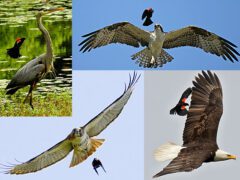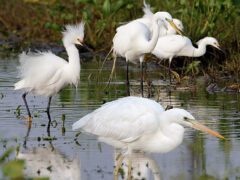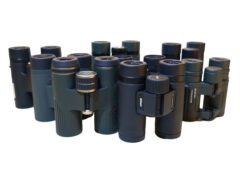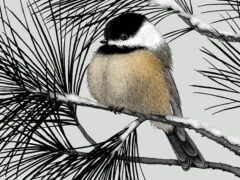The Four Keys to ID
- Size & Shape
Tiny, large-headed but small-billed, with a long, narrow tail and full, rounded wings.
Relative Size
Same size as Black-capped Chickadee.

 sparrow-sized or smaller
sparrow-sized or smallerMeasurements
- Both Sexes
- Length: 4.3-5.5 in (11-14 cm)
- Weight: 0.4 oz (11 g)
© Dennis Leonard / Macaulay Library
- Color Pattern
- Behavior
- Habitat
Regional Differences
Mountain Chickadees of the Rocky Mountains tend to have short, blunt bills and buffy flanks. In the Great Basin the bill is longer, thinner, and more pointed. Birds in the Sierra Nevada and Cascades have the largest bills, and their flanks match their back color.





















